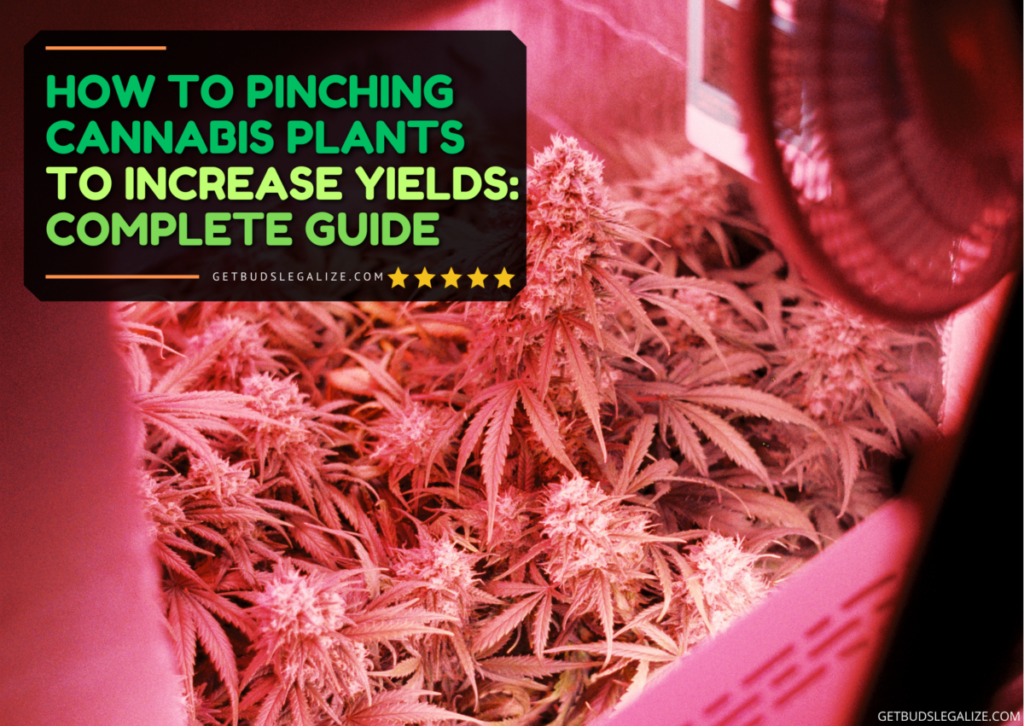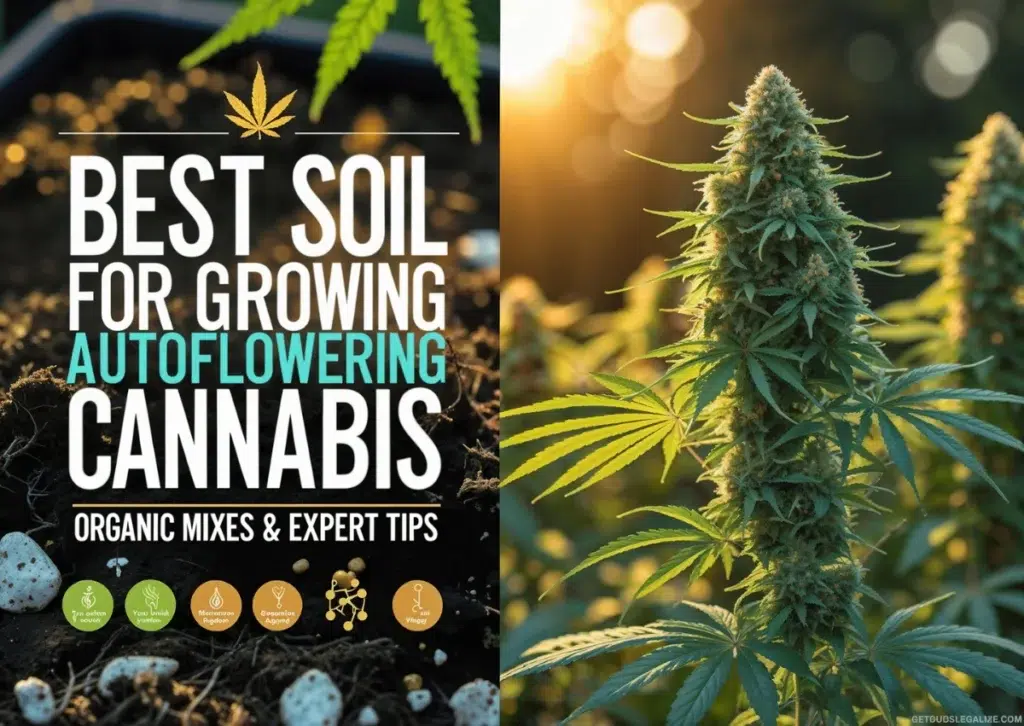How to Pinching Cannabis Plants to Increase Yields: Complete Guide
If you want to grow bigger and better cannabis plants, you might want to consider pinching them. Pinching cannabis is a simple technique that involves removing the top part of the main stem or branches of your plants. This stimulates the growth of more branches and buds, resulting in a bushier and more productive plant.
But when should you pinch your plants? Why does it work? And how do you do it correctly? In this guide, we will clarify and answer all your questions!
How Pinching Your Plants Will Increase Your Yield
Pinching your plants is a form of low-stress training (LST), which is a technique that involves manipulating the shape and structure of your plants without causing too much damage or stress. LST can help you optimize the use of your grow space and light source, as well as improve the airflow and light penetration in your cannabis cultivation.
By pinching the top part of your plant’s main stem or branches, you are essentially creating two or more main colas instead of one. This means that your plant will produce more buds and have a more even canopy. Pinching also reduces the height of your plant, which can be useful if you have limited vertical space or want to avoid light burn.
Pinching also triggers a hormonal response in your plant. By removing the apical meristem (the growing tip of the stem), you are disrupting the production and distribution of auxins, which are plant hormones that regulate growth and development.
Auxins are produced in the apical meristem and inhibit the growth of lateral buds. By pinching the apical meristem, you are reducing the auxin levels and allowing the lateral buds to grow more freely.
How to Pinch Your Plants: FIM vs Topping
There are two main methods of pinching your plants: topping and FIM. Both methods involve cutting off the top part of the stem, but they differ in how much and when.
Topping
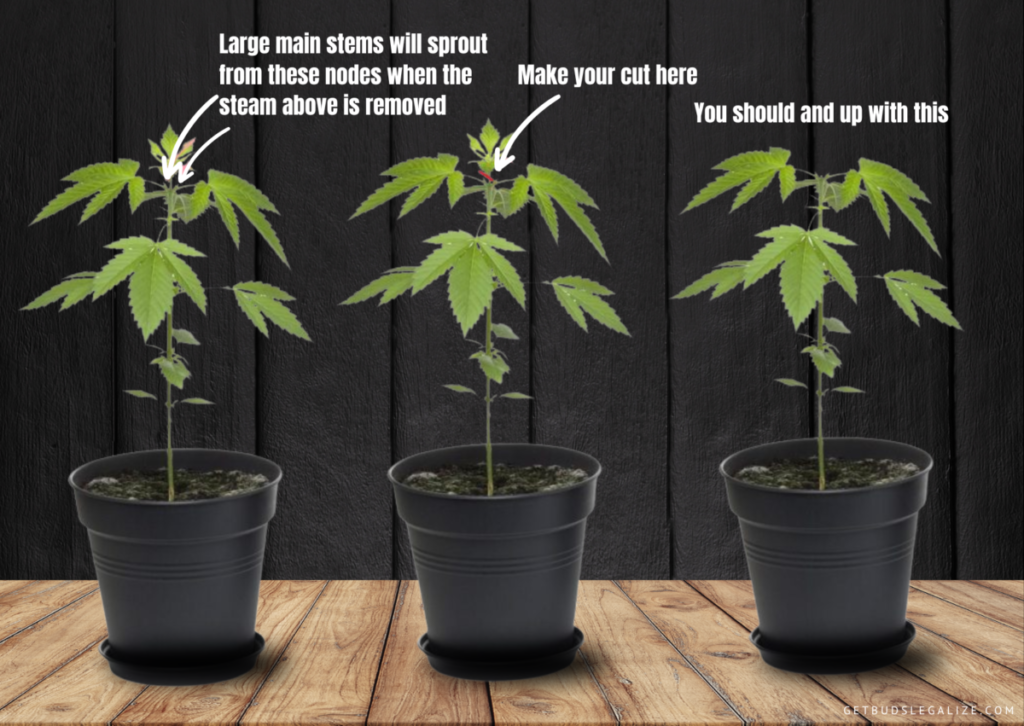
Topping cannabis is the most common and straightforward method of pinching. It involves cutting off the top part of the main stem or branches, leaving behind two nodes (the points where new branches emerge). This creates two new main colas instead of one.
Topping is best done when your plant has at least 4-6 nodes, usually during the vegetative stage. You can top your plant multiple times to create more colas, but make sure to leave enough time for recovery between each topping. You should also avoid topping too late into flowering, as this can reduce your yield and quality.
To top your plant, simply use a clean and sharp pair of scissors or pruning shears and cut off the top part of the stem above the node you want to keep. You can also use your fingers to pinch off the stem if it is soft enough. Make sure to cut at a 45-degree angle to prevent water from accumulating on the wound. You can also apply some honey or aloe vera gel to help with healing.
FIM
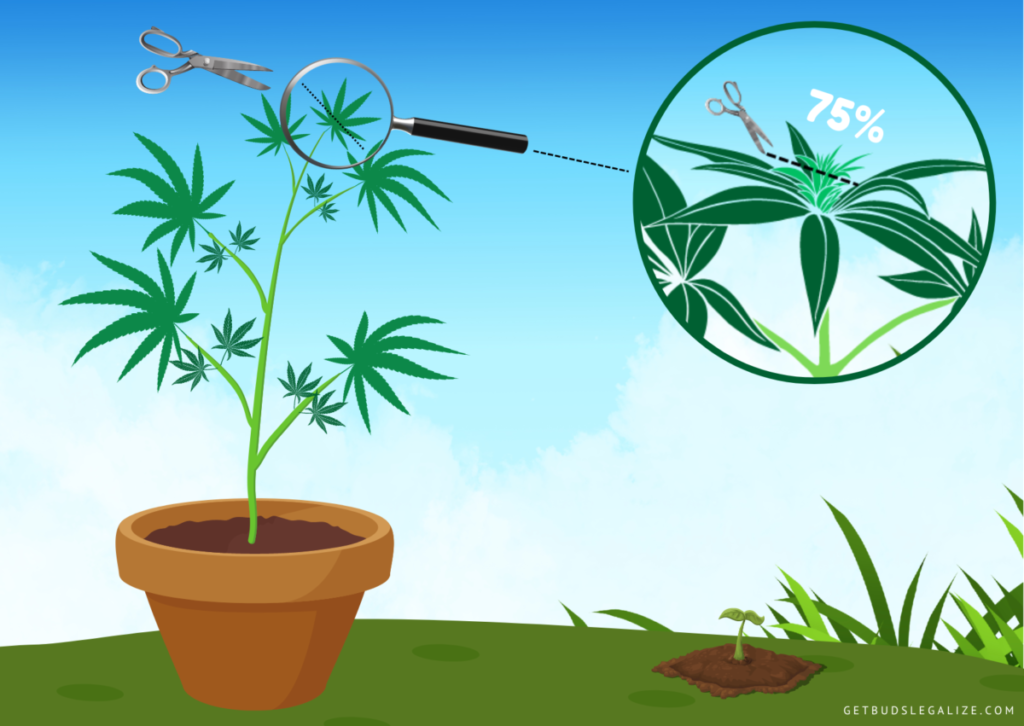
FIM stands for “fuck I missed” or “fimmed”, which refers to how this method was discovered by accident. It involves cutting off only about 75% of the top part of the stem, leaving behind a small portion of the apical meristem. This creates four or more new colas instead of two.
FIM is best done when your plant has at least 3-4 nodes, usually during the vegetative stage. You can FIM your plant multiple times to create more colas, but make sure to leave enough time for recovery between each FIM. You should also avoid FIMing too late into flowering, as this can reduce your yield and quality.
To FIM your plant simply uses a clean and sharp pair of scissors or pruning shears and cut off about 75% of the top part of the stem above the node you want to keep. You can also use your fingers to pinch off the stem if it is soft enough. Make sure to cut at a 45-degree angle to prevent water from accumulating on the wound. You can also apply some honey or aloe vera gel to help with healing.
How Often Should You Pinch Your Cannabis Plants?
The frequency of pinching depends on your personal preference and the strain you are growing. Some strains are more responsive to pinching than others, and some growers like to pinch more aggressively than others.
A general rule of thumb is to pinch your plants once every 2-3 weeks, or whenever they have grown 2-3 nodes above the last pinch site. You can also pinch selectively, targeting only the branches that are growing too tall or too fast.
How Much Should You Pinch Off Each Time?
The amount you should pinch off each time depends on how much stress you want to put on your plant and how much recovery time you have.
Generally, you should pinch off no more than 25% of the plant at a time, and give it at least a week to recover before pinching again.
What Are The Benefits and Drawbacks of Pinching?
Pinching has many benefits for marijuana growers who want to increase their yields and improve their plant structure. Some of these benefits are:
- More branches and buds: Pinching creates multiple colas (top buds) instead of one main cola, which increases the overall yield potential of the plant.
- More even canopy: Pinching helps create a flat and uniform canopy, which ensures that all buds receive equal amounts of light and air.
- More control over height: Pinching reduces the vertical growth of the plant, which makes it easier to manage in small grow rooms or stealthy setups.
- More resilience: Pinching makes the plant stronger and more resistant to pests, diseases, wind damage, etc.
However, pinching also has some drawbacks that you should be aware of before applying it to your plants. Some of these drawbacks are:
- More stress: Pinching causes some degree of stress to the plant, which can affect its health and performance if done too frequently or too harshly.
- More maintenance: Pinching requires more attention and care than letting the plant grow naturally, as you need to monitor its growth and pinch it regularly.
- More risk of infection: Pinching creates wounds that can be entry points for pathogens or pests, especially if the tools or fingers are not clean or sterilized.
How Does Pinching Compare to Other Training Techniques?

Pinching is one of the many training techniques that cannabis growers can use to manipulate their marijuana plants and optimize their yields. Some of the other common techniques are:
• Lollipopping:
This technique involves removing the lower branches and leaves of a cannabis plant to focus the energy and nutrients on the upper buds. Lollipopping can improve airflow and light penetration, as well as reduce the risk of mold and pests. However, it can also stress the plant and reduce the overall yield.
• Super Cropping:
This technique involves bending and twisting the stems of a cannabis plant to create small breaks or kinks that heal over time. Super cropping can increase the strength and resilience of the plant, as well as stimulate the production of cannabinoids and terpenes. However, it can also damage the plant if done too aggressively or too late in the flowering stage.
• Scrogging:
This technique involves using a screen or net to spread out the branches of a cannabis plant and create an even canopy. Scrogging can maximize light exposure and efficiency, as well as increase the yield per square foot. However, it can also require more space and maintenance, as well as limit the mobility and accessibility of the plant.
Each technique has its own advantages and disadvantages and can be combined with others to achieve different results. The best technique for you depends on your goals, preferences, experience, and resources.
Experiment with different methods and see what works best for you and your plants.
Tips for Fimming and Topping Your Plants Correctly
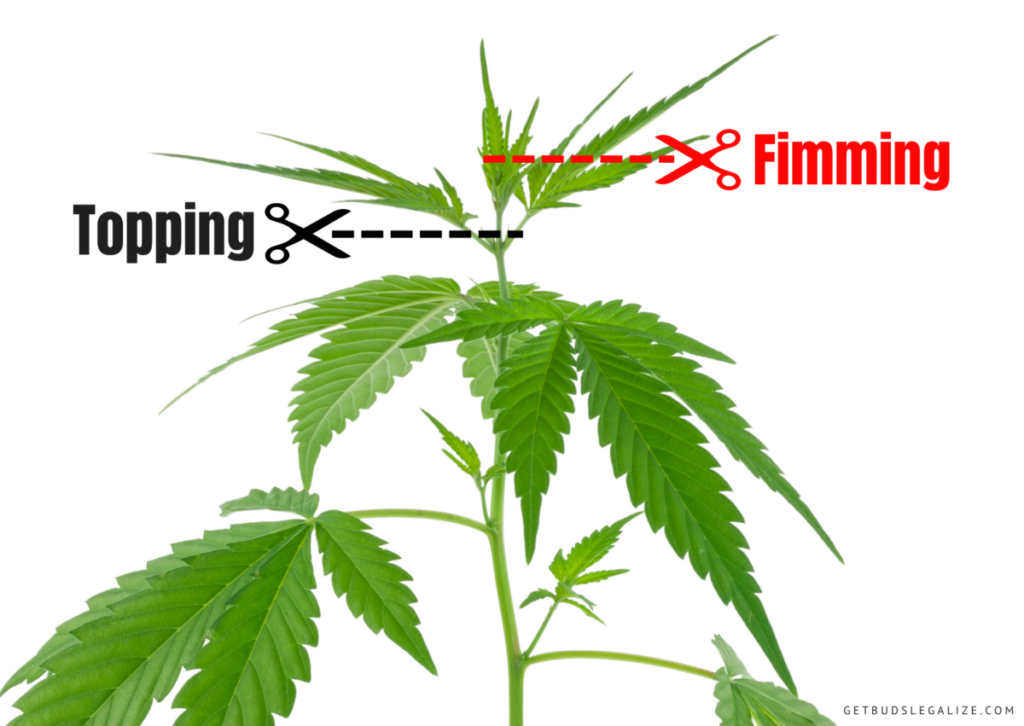
Here are some tips for topping and fimming cannabis:
- Choose healthy and vigorous plants that have at least 4-6 nodes. Avoid topping or FIMing plants that are stressed, sick, or flowering.
- Use clean and sharp scissors or a razor blade to make a clean cut or pinch. Avoid tearing or crushing the stem, which can increase the risk of infection or slow down the healing process.
- Apply some aloe vera gel or honey to the cut site to help seal the wound and prevent pathogens from entering.
- Give your plants some extra care after topping or FIMing, such as watering, feeding, and pruning. Avoid exposing them to extreme temperatures, humidity, or light stress, which can hinder their recovery.
- Monitor your plants for signs of new growth, which usually takes 3-5 days after topping and 5-7 days after FIMing. You can repeat the process multiple times to create more colas, but make sure to leave enough time for your plants to recover and grow before switching to flowering.
Are You Ready Now for Pinching Cannabis? Start Today and Increase Your Harvests!
Pinching is a simple and effective way to increase the yields of your marijuana plants by creating more branches and buds. It also helps you control the height and shape of your plants, which can improve their health and performance.
However, you should still be careful and gentle when pinching your plants, make sure to use clean and sharp tools, monitor your plants for signs of recovery and growth after pinching, and adjust your watering and feeding accordingly.
Pinching cannabis is a great way to boost your yields without spending too much time or money. By following this guide, you can learn how to pinch your plants correctly and enjoy the benefits of this simple technique.
ILGM Fertilizer

- From seedling to harvest, give your plants everything they need.
- Enough for feeding at least 5 plants.
- Discounted Package Deal
- Works well in soil, hydroponics, and other growing mediums.
- The best way to treat your plants
ILGM Plant Protector

- Protect your cannabis from diseases and harmful pests.
- Contains three 20 ml bottles.
- Enough supplies to protect 20 plants.
- It can be used in soil, hydroponic, and all other growing mediums.

